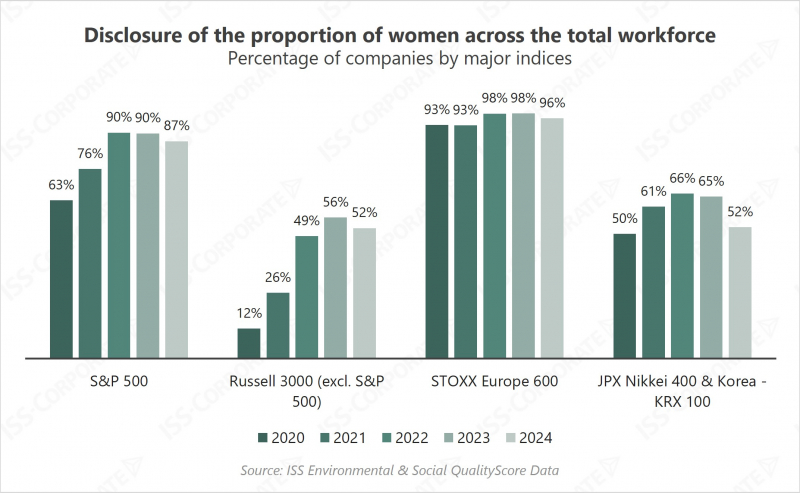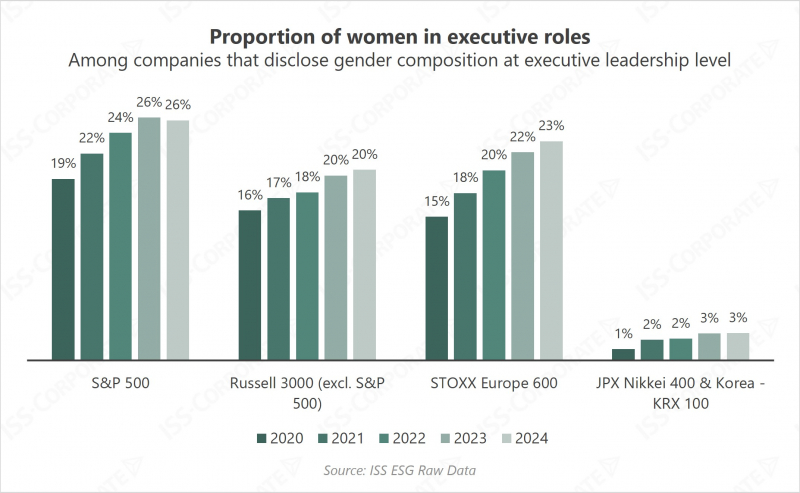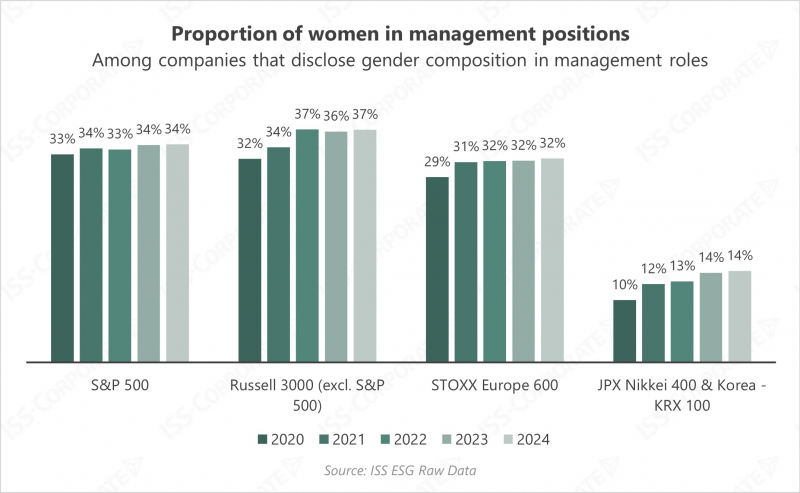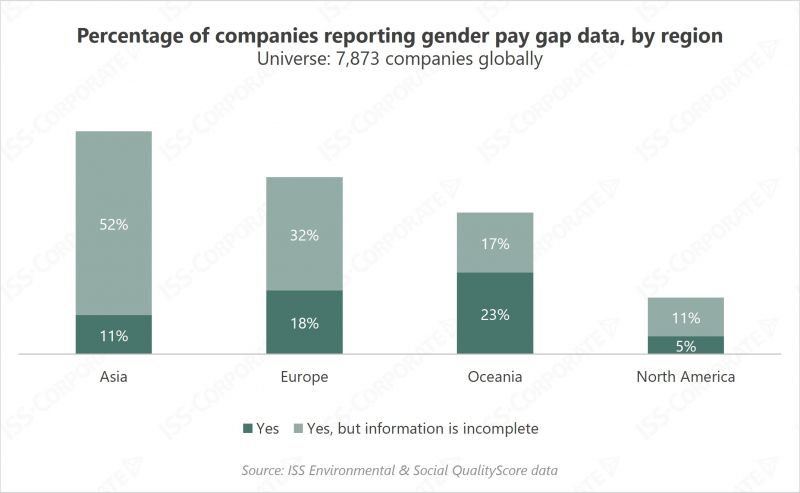
DATE PUBLISHED: March 26, 2025
Gender Diversity in the Workplace: Trends in Corporate Disclosures
Trends in Corporate Disclosure on Gender Representation
As we celebrate International Women’s Day and Women’s History Month this March, ISS-Corporate reviewed corporate disclosure trends on gender-related metrics.
Transparency on gender demographics enables investors to assess companies’ efforts and impact on gender equality. When organizations actively promote gender equality in the workplace, they can unlock significant benefits, including access to a broader and more diverse talent pool.
In recent years, corporate disclosure on gender representation has risen sharply across major global markets. In the U.S., the percentage of S&P 500 companies reporting the proportion of women in their workforce increased from 63% in 2020 to 90% in 2023. In Europe, the proportion of companies in the STOXX Europe 600 index disclosing this data reached an all-time high of 98% in 2023. Across regions and company sizes, we have seen approximately a twofold increase in gender demographics disclosures from 2020 to 2023.
However, in 2024, disclosure rates on gender diversity in total workforce declined slightly across major indices and company sizes. This development may reflect political pressures, caution around stagnating diversity progress, or a natural stabilization of disclosure rates after years of rapid growth. Despite the recent decline, transparency on employee demographics remains significantly higher than five years ago. As the 2025 reporting season unfolds, ISS-Corporate will continue to monitor corporate disclosure trends.

Companies are also increasingly sharing information about women in management or executive roles. Today, 41% and 44% of 8,872 global companies under ISS data coverage disclosure disclose the proportion of women in management positions and women in executive roles, respectively.
Of the companies that disclose information about women in leadership, there is a small but steady increase in the proportion of women in executive roles, albeit from a low base. On average, S&P 500 companies have the highest proportion of women in executive roles at 26% in 2024. The percentage of women executive roles among the companies listed in the Japanese JPX Nikkei 400 and Korean KRX 100 indices remains low at only 3%.

The proportion of women in management positions remained relatively stable in the U.S. and Europe in the past five years. However, in Asia (among JPX Nikkei 400 and KRX 100 companies), the percentage of women in management position saw a notable increase, rising from 10% in 2020 and 14% in 2024.

Regulatory requirements are increasingly driving gender pay gap disclosures, with companies in the Asia region leading the way at a disclosure rate of 63%. However, many of these disclosures remain incomplete, often covering only specific countries or parts of the company’s operations rather than the entire global workforce.

Practices to Advance Gender Equality in the Workplace
When it comes to workplace discrimination, most companies publicly commit to prohibit gender-based discrimination, with 85% of 7,873 global companies under ISS data coverage having adopted formal policies against gender discrimination.
To advance gender equality in the workplace, organizations can implement a range of initiatives, including:
- Professional development and leadership training to support emerging leaders regardless of gender;
- Gender-neutral hiring practices, such as unbiased job descriptions and diverse interview panels;
- Inclusive benefits, including parental and dependent leave;
- Flexible work arrangements, such are remote work options and adjustable working hours; and
- Mentorship programs that foster career growth for employees of all genders.
By adopting these and other inclusive workplace practices can create a more equitable work environment while strengthening their commitment to fair and supportive employment policies.

